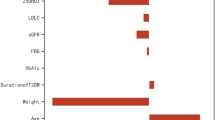Abstract
Osteoporosis is a common disease with a strong genetic component characterized by reduced bone mass and an increased risk of fragility fractures. Bone mineral density (BMD) is the most important determinant of osteoporotic fracture risk, but the genes responsible for BMD regulation and fracture are incompletely defined. To enable multi-center studies to examine the genetic influences on BMD there is a requirement to standardize measurements across different manufacturers of bone densitometers, different versions of machines and different normative ranges. This paper describes a method developed to allow near-identical subjects with low age-adjusted BMD (based on Z-scores) to be recruited in 17 centers using 27 different densitometers. Cross-calibration was based on measurements using a European spine phantom circulated to all centers and measured ten times on each individual machine. From theses values an individual exponential curve, based on nominal versus observed BMD, was derived for each machine. As expected, there were large and significant variations in nominal BMD values, not only between scanners from different manufacturers but also between different versions of scanners from the same manufacturer. Hologic scanners tended to underestimate the nominal BMD, while Lunar scanners overestimated the value. Norland scanners gave mixed values over estimating BMD at the lower nominal value (0.5 g/cm2) while underestimating the value at the higher value (1.5 g/cm2). The validity of the exponential equations was tested using hip and spine measurements on 991 non-proband women from a familial osteoporosis study (FAMOS). After cross-calibration there was a considerable reduction in variation between machines. This observation, coupled with the absence of a similar reduction in variation attributable to a linear regression on age, demonstrated the validity of the cross-calibration approach. Use of the cross-calibration curves along with a standard normative range (in the case of this study, the Hologic normative range) allowed age-specific Z-scores to be used as an inclusion criterion in this genetic study, a method that will be useful for other trials where age-specific BMD inclusion criteria are required.

Similar content being viewed by others
References
Baran DT, Faulkner KG, Genant HK, Miller PD, Pacifici R (1997) Diagnosis and management of osteoporosis: guidelines for the utilization of bone densitometry. Calcif Tissue Int 61:433–440
Blake GM, Fogelman I (2002) Dual energy X-ray absorptiometry and its clinical applications. Semin Musculoskelet Radiol 6:207–218
Genant HK, Grampp S, Gluer CC, et al (1994) Universal standardization for dual X-ray absorptiometry: patient and phantom cross-calibration results. J Bone Miner Res 9:1503–1514
Kalender WA (1992) A phantom for standardization and quality control in spinal bone mineral measurements by QCT and DXA: design considerations and specifications. Med Phys 19:583–586
Kalender WA, Felsenberg D, Genant HK, Fischer M, Dequeker J, Reeve J (1995) The European spine phantom—a tool for standardization and quality control in spinal bone mineral measurements by DXA and QCT. Eur J Radiol 20:83–92
Hui SL, Gao S, Zhou XH, et al (1997) Universal standardization of bone density measurements: a method with optimal properties for calibration among several instruments. J Bone Miner Res 12:1463–1470
Looker AC, Orwoll ES, Johnston CC Jr, et al (1997) Prevalence of low femoral bone density in older US adults from NHANES III. J Bone Miner Res 12:1761–1768
Lu Y, Fuerst T, Hui S, Genant HK (2001) Standardization of bone mineral density at femoral neck, trochanter and Ward’s triangle. Osteoporos Int 12:438–444
Pearson J, Dequeker J, Henley M, et al (1995) European semi-anthropomorphic spine phantom for the calibration of bone densitometers: assessment of precision, stability and accuracy. The European Quantitation of Osteoporosis Study Group. Osteoporos Int 5:174–184
Genstat (2000) Genstat for Windows. Release 4.2, 5th edn. VSN International Ltd, Oxford
Dequeker J, Pearson J, Reeve J, et al (1995) Dual X-ray absorptiometry—cross-calibration and normative reference ranges for the spine: results of a European Community Concerted Action. Bone 17:247–254
Pearson J, Dequeker J, Reeve J, et al (1995) Dual X-ray absorptiometry of the proximal femur: normal European values standardized with the European spine phantom. J Bone Miner Res 10:315–324
Lunt M, Felsenberg D, Adams J, et al (1997) Population-based geographic variations in DXA bone density in Europe: the EVOS Study. European Vertebral Osteoporosis. Osteoporos Int 7:175–189
Kroger H, Lunt M, Reeve J, et al (1999) Bone density reduction in various measurement sites in men and women with osteoporotic fractures of spine and hip: the European Quantitation Of Osteoporosis Study. Calcif Tissue Int 64:191–199
Kanis JA (2002) Diagnosis of osteoporosis and assessment of fracture risk . Lancet 359:1929–1936
Looker AC, Wahner HW, Dunn WL, et al (1998) Updated data on proximal femur bone mineral levels of US adults. Osteoporos Int 8:468–489
Faulkner KG, Roberts LA, McClung MR (1996) Discrepancies in normative data between Lunar and Hologic DXA systems. Osteoporos Int 6:432–436
Acknowledgements
We are grateful to Lon Cardon for his advice on the statistical design of the study. We are also extremely grateful to FAMOS research nurses for their help and dedication: Janet Ball, Irene Debiram, Lise Hejl, Vera Herd, Alison James, Debbie Nelson, Ria Skelton, Rita Smith, Ingrid Struik and Bridget Watkins.
Author information
Authors and Affiliations
Corresponding author
Rights and permissions
About this article
Cite this article
Reid, D.M., Mackay, I., Wilkinson, S. et al. Cross-calibration of dual-energy X-ray densitometers for a large, multi-center genetic study of osteoporosis. Osteoporos Int 17, 125–132 (2006). https://doi.org/10.1007/s00198-005-1936-y
Received:
Accepted:
Published:
Issue Date:
DOI: https://doi.org/10.1007/s00198-005-1936-y




